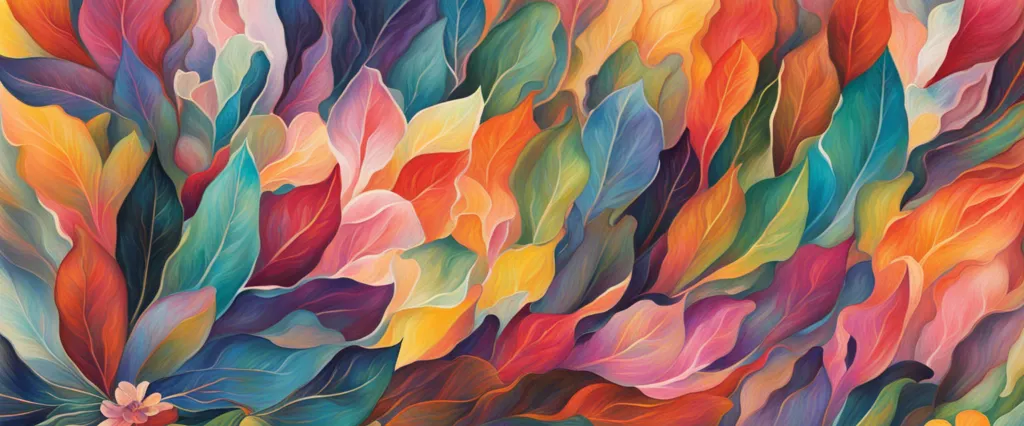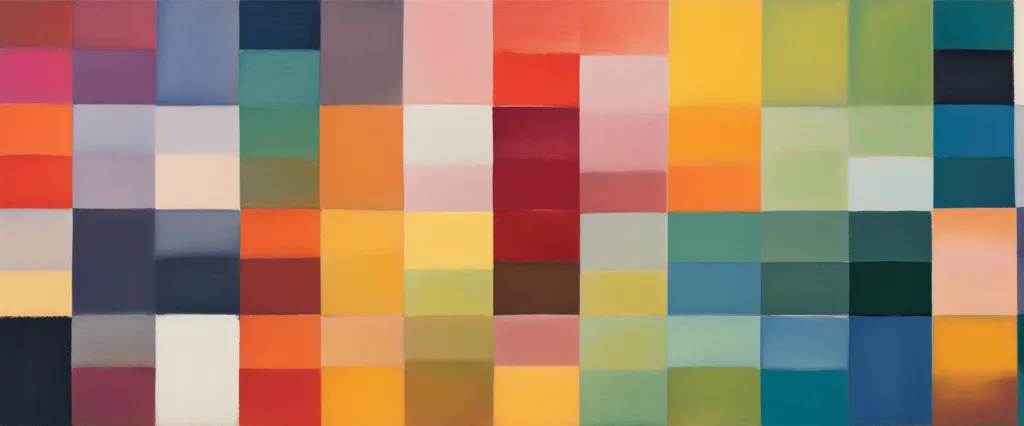In “Color,” a captivating exploration of the history, science, and cultural significance of pigments, Victoria Finlay takes readers on an enlightening journey through the rainbow. With a blend of travelogue, history, and personal narrative, Finlay uncovers the hidden stories behind familiar hues and unveils the profound impact colors have had on human civilization. An acclaimed British author and journalist, Finlay is known for her enthusiastic approach to uncovering the hidden tales that lie within the world of art and color. Through her meticulous research and anecdotes, she sheds new light on the power and allure of the pigments that have shaped our lives for centuries.
Chapter 1: Red
Chapter 1 of the book “Color” by Victoria Finlay, titled “Red,” explores the history and significance of the color red throughout civilizations, cultures, and time. Finlay immerses herself in the world of color and takes readers on a journey through anecdotes, historical events, and scientific discoveries related to this vibrant hue.
The chapter begins with an account of the intense physical and emotional impact of red, expressing its ability to captivate, inspire, and evoke strong reactions. Finlay narrates how she visits the ancient city of Petra, Jordan, renowned for its remarkable red-hued architecture carved into the surrounding rose-red sandstone cliffs. This encounter serves as the perfect starting point for her exploration into the origins, symbolism, and artistic representation of red.
Finlay delves into the rich history of red, tracing it back to prehistoric times when early humans extracted pigments from minerals to create vibrant cave paintings. She recounts the warmth and popularity of red in ancient civilizations such as Egypt, where it was associated with power, life, and protection against evil forces. The author describes the labor-intensive and sometimes dangerous methods used to obtain red pigments, such as extracting dye from crushed insects or grinding minerals like cinnabar.
Additionally, the chapter highlights the significance of red in religious and symbolic contexts worldwide, from the powerful and menacing deities of ancient Greece to the sacred robes of Catholic cardinals. Finlay also explores the role of red in society and culture, from red traffic lights signifying danger to the passionate connotations and social implications associated with red lipstick.
Through her meticulous research and engaging storytelling, Finlay paints a vivid picture of red’s historical, cultural, and emotional influence while shedding light on the various ways this captivating color has played a remarkable role in shaping the world.
Chapter 2: Yellow
Chapter 2: Yellow of the book “Color” by Victoria Finlay delves into the history, cultural significance, and symbolism of the color yellow, exploring the various sources from which it is derived.
The chapter begins by recounting the ancient origins of yellow pigments, specifically focusing on the use of ochre by early civilizations. Known for its warm and earthy hue, ochre was one of the first pigments ever used by early humans, discovered in cave paintings dating back thousands of years. Finlay also examines the natural occurrence of yellow in various minerals and gemstones, such as the radiant yellow color produced by sulfur.
Furthermore, the chapter covers the extraction of yellow pigments from plants, particularly saffron. Finlay explores saffron’s significance across different cultures, from its use in religious ceremonies in Ancient Egypt to its connection to luxury and wealth in Medieval Europe. The author also explains the challenging and labor-intensive process of cultivating and harvesting saffron, as it requires hand-picking the delicate stigmas of the Crocus flower.
Another highlight of the chapter is the introduction of Asian pigments, such as Chinese yellow made from the urine of cows fed on mango leaves. This unusual process showcases the lengths to which ancient civilizations went in order to create vibrant colors. The exploration of Chinese porcelain, well-known for its brilliant yellow glazes, further exemplifies the cultural significance of the color yellow in Asia.
Finally, the chapter concludes with the examination of yellow’s symbolic associations. Yellow is often associated with divinity, royalty, and enlightenment, as evidenced by the golden halos seen in religious art and its connection to the sun. However, it also carries negative connotations in certain cultures, experiencing periods of scorn and mistrust due to its association with superstition and illness.
In summary, Chapter 2 of “Color” takes readers on a captivating journey through the history, sources, cultural significance, and symbolism of the color yellow, providing a rich and comprehensive understanding of this vibrant hue.
Chapter 3: Blue
Chapter 3: Blue of the book “Color” by Victoria Finlay delves into the fascinating history and significance of the color blue. The author takes readers on a journey across continents and through time to explore the origins and importance of this captivating shade.
Initially, Finlay explains how blue pigment was historically obtained from precious stones, such as lapis lazuli, which were primarily sourced from the mountains of Afghanistan. She highlights the arduous labor involved in mining and preparing this stone for use in creating pigments for artwork and decorative purposes.
The author then moves on to discuss ancient Egyptian civilization, where blue played a significant role. Egyptians believed blue was the color of the heavens and immortality. They used a mineral called Egyptian blue, composed of ground sand, copper, and lime, to create vibrant blue pigments for various applications, including tomb murals.
Finlay also explores how the production of blue pigments evolved in different cultures and time periods. For instance, she reveals how the Chinese discovered and developed the technique of creating true porcelain using cobalt blue pigments. This discovery marked a turning point in the history of ceramics.
Additionally, Finlay discusses the transformative effect the discovery of ultramarine, a deep and brilliant blue, had on art during the Renaissance. This pigment, made from lapis lazuli, became a symbol of wealth and power as it was expensive and exclusive to the elite.
The chapter ends by emphasizing the universal symbolization of blue as a color associated with spirituality, purity, and peacefulness. Blue is an ever-present color in nature, from the sky to the seas, and its significance resonates throughout human history.
In summary, Chapter 3 of “Color” by Victoria Finlay takes readers on a captivating exploration of the color blue, showcasing its origins, cultural significance, and transformative impact on art and society throughout history.
Chapter 4: Green

Chapter 4 of the book “Color” by Victoria Finlay, titled “Green,” explores the historical significance and cultural connotations of the color green throughout various civilizations and time periods.
The chapter begins by highlighting how green, being the color of nature, has often been associated with life, growth, and fertility. Finlay traces the origins of green pigments, noting that ancient Egyptians used a mineral called malachite to create vivid green hues. The Egyptians also associated green with rebirth and used it to depict the gods of vegetation and fertility.
Moving forward, the book delves into the historical uses and symbolism of green in different parts of the world. In ancient Rome, for example, green was associated with luck and victory. The Green Man, a deity of nature, was highly revered during the medieval period in Europe. Green was also significant in Islamic cultures, symbolizing paradise and faithfulness.
Finlay explores how the availability of green pigments varied throughout history. The use of verdigris, a green patina formed on copper, was popular during the Renaissance, while emerald green, made from crushed emeralds, was a luxurious color in the 19th century. Additionally, the arrival of synthetic dyes revolutionized the production of green pigments, making it more accessible and affordable for artists.
The chapter concludes by discussing the environmental impact of green pigments. Finlay examines the toxicity of various green pigments, such as Scheele’s Green and Paris Green, that were commonly used in the 18th and 19th centuries. These pigments contained dangerous levels of arsenic, which posed health risks to both the artists and the environment.
In summary, Chapter 4 of “Color” provides a comprehensive exploration of the historical, cultural, and artistic significance of the color green. From ancient Egyptian associations with fertility to its use as a symbol of faithfulness in Islamic cultures, green has played a diverse and complex role throughout human civilization. By examining the availability and toxicity of green pigments, Finlay sheds light on the evolution of artistic practices and the impact on both artists and the environment.
Chapter 5: Purple
Chapter 5: Purple of the book Color by Victoria Finlay explores the fascinating history, cultural significance, and complexities associated with the color purple. Finlay takes readers on a journey spanning different ancient civilizations and explores the origins of purple dye, its rarity, and its association with power, royalty, and spirituality.
The chapter begins by delving into the early origins of purple dye in ancient Phoenicia, where it was derived from a shellfish known as the murex. The extraction process was labor-intensive and required an immense amount of dye-producing mollusks, making purple garments a luxury only affordable to royalty and the wealthy elite.
Finlay then ventures into the historical and cultural significance of purple in Ancient Rome, where it was initially associated with authority and divine power. Purple garments known as toga picta were worn by victorious generals, symbolizing their triumph. Over time, purple became exclusively reserved for Roman emperors, and the mere act of wearing purple without the emperor’s permission was considered treasonous.
The chapter also discusses the connection between purple and the Catholic Church, particularly the color’s association with bishops and cardinals. The symbolism of purple in Christianity extends to the death and resurrection of Jesus Christ, with purple being seen as a representation of both suffering and royalty.
Moreover, Finlay explores the use of purple pigments in artistic masterpieces, such as the works of Leonardo da Vinci and Johannes Vermeer. These painters utilized a pigment called Tyrian purple, which evokes a sense of luxury and opulence in their creations.
In summary, Chapter 5 of Color provides a comprehensive look into the history, cultural significance, and symbolic meanings associated with the color purple. From its origins as a labor-intensive dye to its representation of power, authority, and spirituality in various historical contexts, purple has established itself as a color synonymous with both rarity and influence.
Chapter 6: Black
Chapter 6: Black of the book Color by Victoria Finlay delves into the history, origins, and symbolism associated with the color black. Finlay explores the various sources of black throughout history, from natural materials to manufactured pigments.
The chapter begins by examining the earliest black pigments, derived from charcoal and soot. These materials were used by ancient Egyptians to create black ink and by cave dwellers to paint animals on cave walls. The author delves into the significance of black in different cultures, such as its association with death and mourning in Ancient Egypt and its representation of power and authority in Medieval Europe.
Finlay then introduces the history of lampblack, a pigment derived from burning oils like linseed or animal fat. She traces its use from ancient Chinese calligraphy to its popularity during the Renaissance period, where it was used by artists like Leonardo da Vinci and Rembrandt. The author highlights how the nature of lampblack made it an incredibly versatile black pigment, used for painting, writing, and even medicinal purposes.
Moving on, Finlay explores the introduction of the first synthetic pigment, ivory black, during the 19th century. She explains how ivory black replaced the use of charred ivory, highlighting the devastating impact the ivory trade had on elephant populations. The author also discusses other synthetic black pigments developed in the 20th century, such as carbon black and Mars black, which revolutionized the painting industry.
Lastly, the chapter delves into the cultural symbolism of black, including its associations with power, elegance, and even rebellion. It explores how black has been employed in fashion, art, and even as a political statement. Finlay concludes the chapter by emphasizing the complex and evolving nature of the color black, highlighting its rich history and cultural significance across different societies.
Overall, Chapter 6 provides an extensive overview of the origins, historical uses, and cultural symbolism of black, giving readers a comprehensive understanding of one of the most integral colors in human history.
Chapter 7: White
In Chapter 7 of the book “Color” by Victoria Finlay, titled “White,” the author delves into the history and significance surrounding the color white. She explores how different cultures and civilizations have perceived and utilized white throughout history.
Finlay begins by discussing the symbolic meanings associated with white. In Western cultures, white often represents purity, innocence, and spirituality. However, she goes beyond the superficial meanings to explore the deeper cultural and historical significance of white. For instance, she explores how white pigments were used in ancient cave paintings and how the presence of white indicates the progressive development of art.
The author then takes readers on a journey across various civilizations, explaining the use of white in different contexts. She explores how the ancient Greeks and Romans utilized white lead pigments to create whiteness in their artworks, despite the dangers posed by lead poisoning. Additionally, she discusses how imperial China revered porcelain, known for its white appearance, as a symbol of luxury and prestige.
Furthermore, Finlay delves into the origins of white pigments, examining materials such as chalk, limestone, gypsum, and kaolin, and how they provided the basis for white pigments used in painting and dyeing. She also touches upon the extensive use of white in religious rituals, exploring its role in Hindu ceremonies and ancient Egyptian rituals.
In her thought-provoking exploration of the color white, Finlay provides readers with a deeper understanding of its complex history and significance. From artistic expression to religious rituals, white has transcended cultures and time, leaving an indelible mark on human civilization.

Chapter 8: Gold
Chapter 8: Gold of the book “Color” by Victoria Finlay delves into the fascinating history of gold, exploring its significance and the role it has played in human civilizations throughout the ages.
The chapter begins with the author recounting her visit to a gold mine in Ghana, where she witnesses the arduous and hazardous process of extracting this precious metal from the earth. This experience sets the stage for a deeper exploration of the allure and intrigue surrounding gold.
Finlay takes readers on a journey back in time to the ancient Egyptians, who considered gold the flesh of the gods and used it extensively in their elaborate funeral rituals. She then traces the path of gold through various civilizations, including the Aztecs and the Incas, who revered gold and used it for religious and ceremonial purposes.
The author also delves into the connection between gold and power, as she explores the role of gold in imperial conquests and the accumulation of wealth by empires such as the Romans and the Spanish conquistadors. She highlights the immense political and economic power that gold has wielded throughout history, often leading to great conflicts and greed-driven endeavors.
Furthermore, Finlay delves into the technical aspects of gold, describing its properties and the various methods employed to extract, refine, and craft it into intricate works of art. She discusses the artistry and skill involved in goldsmithing, highlighting the craftsmanship of civilizations such as the Etruscans and the Byzantines.
In the latter part of the chapter, the author explores the present-day gold industry, its environmental impact, and the ethical issues surrounding gold mining and trade. She discusses the efforts being made to regulate the industry and promote responsible sourcing practices.
Overall, by delving into the history, cultural significance, and current affairs surrounding gold, Chapter 8 provides readers with a comprehensive understanding of this precious metal, its enduring appeal, and its impact on human society.
After Reading
In conclusion, “Color” by Victoria Finlay takes readers on a captivating journey into the world of colors. Through meticulous research and personal exploration, Finlay delves into the histories, origins, and cultural significance of various pigments. From vibrant blues to regal purples and earthy reds, the book uncovers the secrets and stories behind each color. Finlay’s engaging writing style, combined with her extensive knowledge, provides readers with a deeper appreciation for the artistry and science behind colors. Ultimately, “Color” not only informs but also inspires, encouraging us to see the world through a more colorful lens.
1. The Story of Art” by E.H. Gombrich – This classic art history book provides a comprehensive overview of the world’s artistic heritage, exploring the evolution of styles, techniques, and aesthetics across different cultures and time periods.
2. “The Secret Lives of Color” by Kassia St. Clair – Similar to “Color,” this captivating book delves into the fascinating stories and cultural significance behind different colors. From rare pigments to iconic hues, St. Clair explores the history, symbolism, and cultural associations surrounding each shade.
3. “The Color of Water: A Black Man’s Tribute to His White Mother” by James McBride – In this powerful memoir, McBride explores his own life as well as his mother’s, who was white and Jewish, in a society divided by race. Through a blend of personal anecdotes and historical context, he paints a compelling portrait of identity, race, and family.
4. “The Art of Color: The Subjective Experience and Objective Rationale of Color” by Johannes Itten – Written by an influential art educator, this book examines color theory from both an aesthetic and psychological perspective. Itten explores how colors interact and influence emotions, providing practical insights for artists, designers, and anyone interested in color.
5. “A Perfect Red: Empire, Espionage, and the Quest for the Color of Desire” by Amy Butler Greenfield – In this mesmerizing historical account, Greenfield tells the captivating story of the search for the perfect red dye, which became a symbol of power and wealth in Western societies. The book provides a rich exploration of the interplay between history, art, and culture surrounding a single color.




